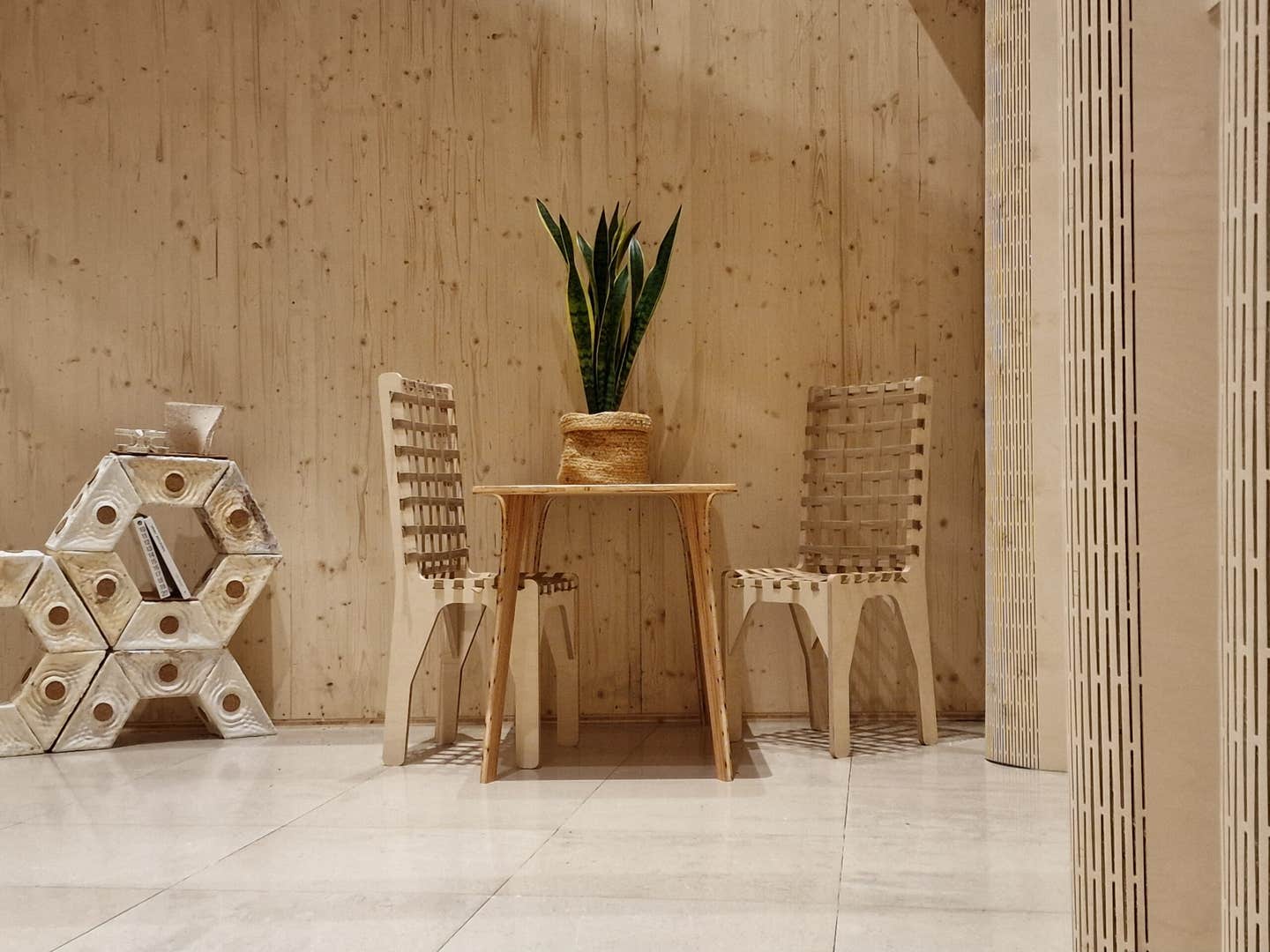New home constructed with flexible partition walls can transform to meet resident needs
The project invites visitors to step into a home constructed around principles of affordability, sustainability, flexibility and adaptation.

[June 2, 2023: Thomas Almeroth-Williams, University of Cambridge]
The project invites visitors to step into a home constructed around principles of affordability, sustainability, flexibility and adaptation. (CREDIT: Cambridge’s Centre for Natural Material Innovation)
House-owners the world over consider ‘knocking through’ walls to achieve more open-plan living or changing layouts to accommodate new arrivals or circumstances. The results may be impressive, but they come at a sizeable financial and environmental cost. But what if it wasn’t necessary to demolish internal brick and/or plaster walls and build new ones?
Researchers at Cambridge’s Centre for Natural Material Innovation and partners PLP Architecture have just unveiled Ephemeral, an innovative alternative using engineered wood, at the London Design Biennale at London’s Somerset House.
The project, led by Cambridge researcher Ana Gatóo, invites visitors to step into a home constructed around principles of affordability, sustainability, flexibility and adaptation. The flexible wooden partition walls – developed by Gatóo as part of her Cambridge PhD research – are made using kerfing, which allows wood to bend without breaking, the same technique employed in the construction of guitars and other stringed instruments.
The resulting wooden walls are simple, resilient, foldable and movable, meaning they can respond to the changing needs of residents, for instance, as children are born or leave the nest; as age or mobility bring changing requirements; or as homeworking patterns change.
Related Stories
Gatóo says: “Self-assembly and modular furniture have improved so many people’s lives. We’ve developed something similar but for walls so people can take total control of their interior spaces.”
“If you have lots of money, you can hire a designer and alter the interiors of your house, but if you don't, you're stuck with very rigid systems that could be decades out-of-date. You might be stuck with more rooms than you need, or too few. We want to empower people to make their spaces their own.”
The team’s ‘rooms of requirement’ provide elegant, affordable solutions which can be built into the fabric of the building from its first design, or seamlessly retrofitted – avoiding the mountains of carbon associated with demolition and reconstruction.
The team’s ‘rooms of requirement’ provide elegant, affordable solutions which can be built into the fabric of the building from its first design. (CREDIT: University of Cambridge)
Gatóo says: “We’re using engineered timber, which is affordable and sustainable. It's a natural material which stores carbon, and when you don’t need it anymore, you can make something else with it. So you are creating minimal waste.”
Gatóo and her colleagues are based in the University of Cambridge’s Centre for Natural Material Innovation, a world leader in research into innovative and sustainable uses of timber in construction.
The team emphasises that their system could be used anywhere in the world, in workplaces as well as in homes, and the researchers have already had encouraging conversations with industry, including with affordable housing developers in India.
We’re using engineered timber, which is affordable and sustainable. It's a natural material which stores carbon, and when you don’t need it anymore, you can make something else with it. (CREDIT: University of Cambridge)
Gatóo says: “I’ve worked in development and post-disaster housing with NGOs in many countries around the world, always using sustainable materials. When I started my PhD, I wanted to merge making housing more affordable and social with technical innovation and sustainability. This is what our cities of the future need – caring for people and the environment at the same time.”
Implemented at scale, this innovation could change the construction industry for the better, empowering people to adapt their spaces to their needs while slashing housing costs and overcoming some of the hurdles which the construction industry must tackle to be part of a sustainable future.
Working with Cambridge Enterprise, the research team is seeking industry and policy partners to further advance product feasibility for industry-wide adoption.
The project is supported by PLP Architecture, The Laudes Foundation, the Future Observatory and the AHRC Design Accelerator.
Note: Materials provided above by University of Cambridge. Content may be edited for style and length.
Like these kind of feel good stories? Get the Brighter Side of News' newsletter.
Joseph Shavit
Head Science News Writer | Communicating Innovation & Discovery
Based in Los Angeles, Joseph Shavit is an accomplished science journalist, head science news writer and co-founder at The Brighter Side of News, where he translates cutting-edge discoveries into compelling stories for a broad audience. With a strong background spanning science, business, product management, media leadership, and entrepreneurship, Joseph brings a unique perspective to science communication. His expertise allows him to uncover the intersection of technological advancements and market potential, shedding light on how groundbreaking research evolves into transformative products and industries.



